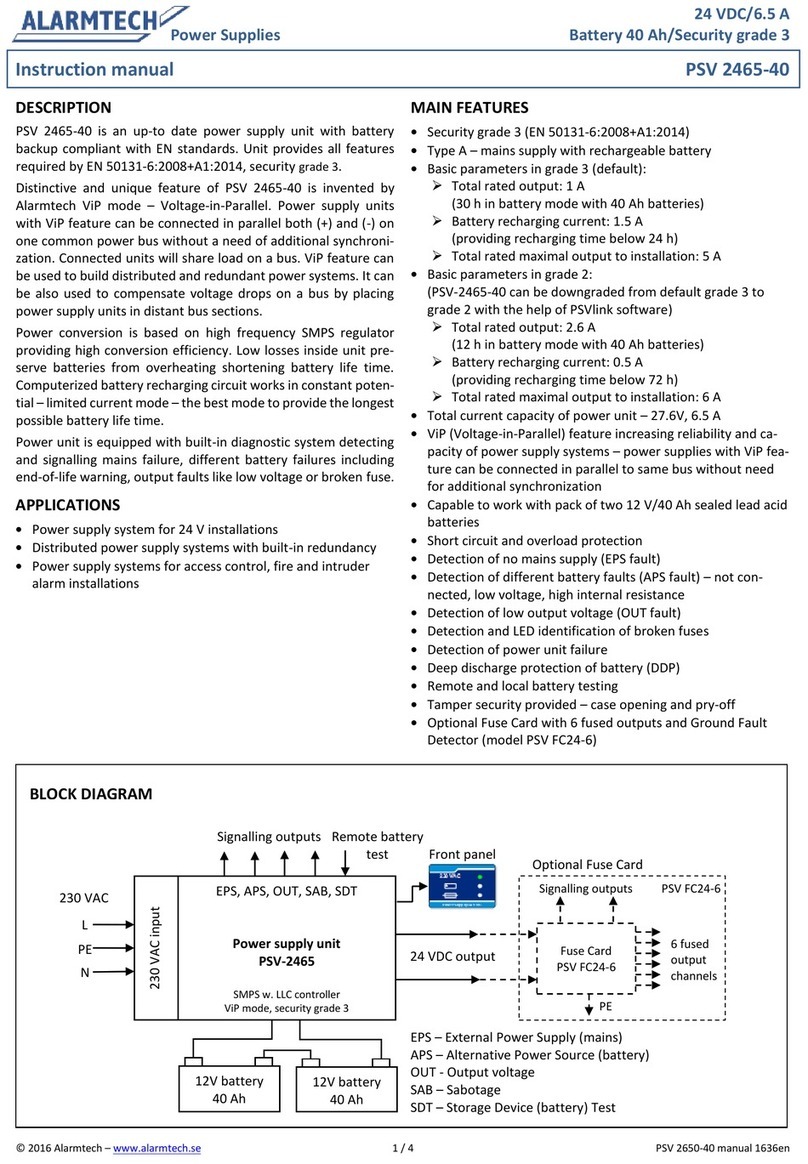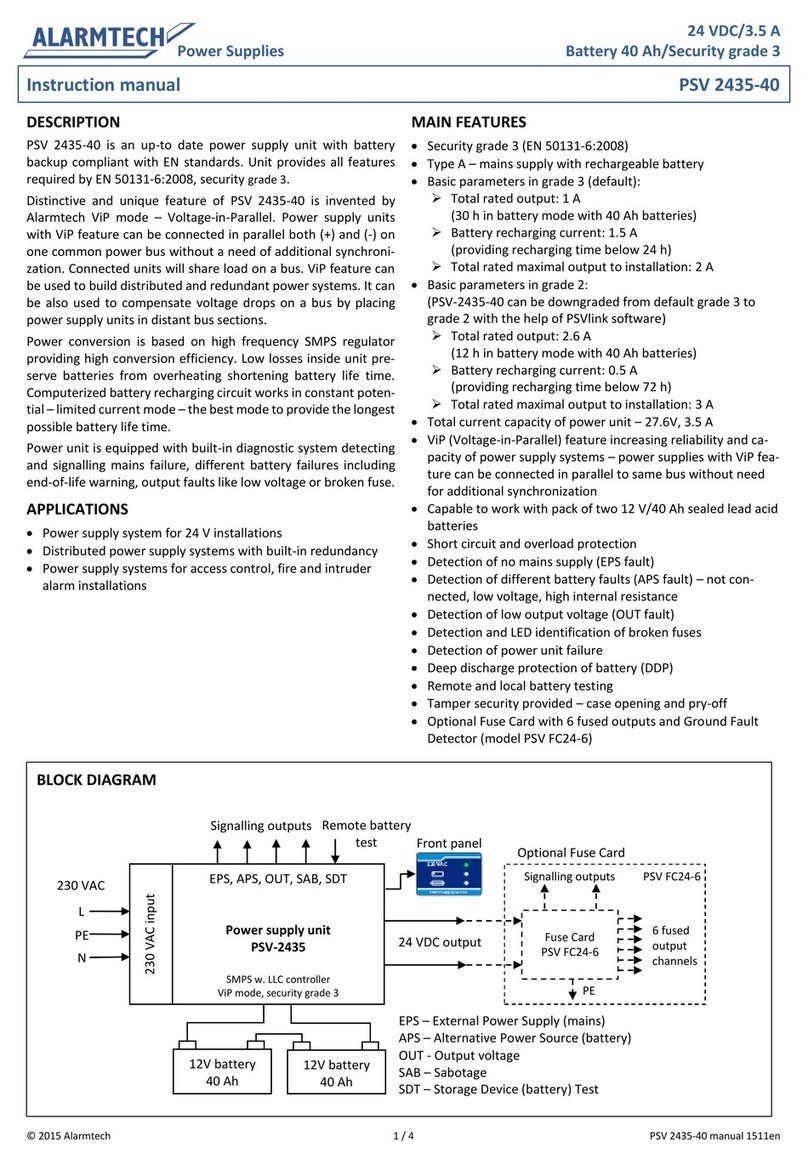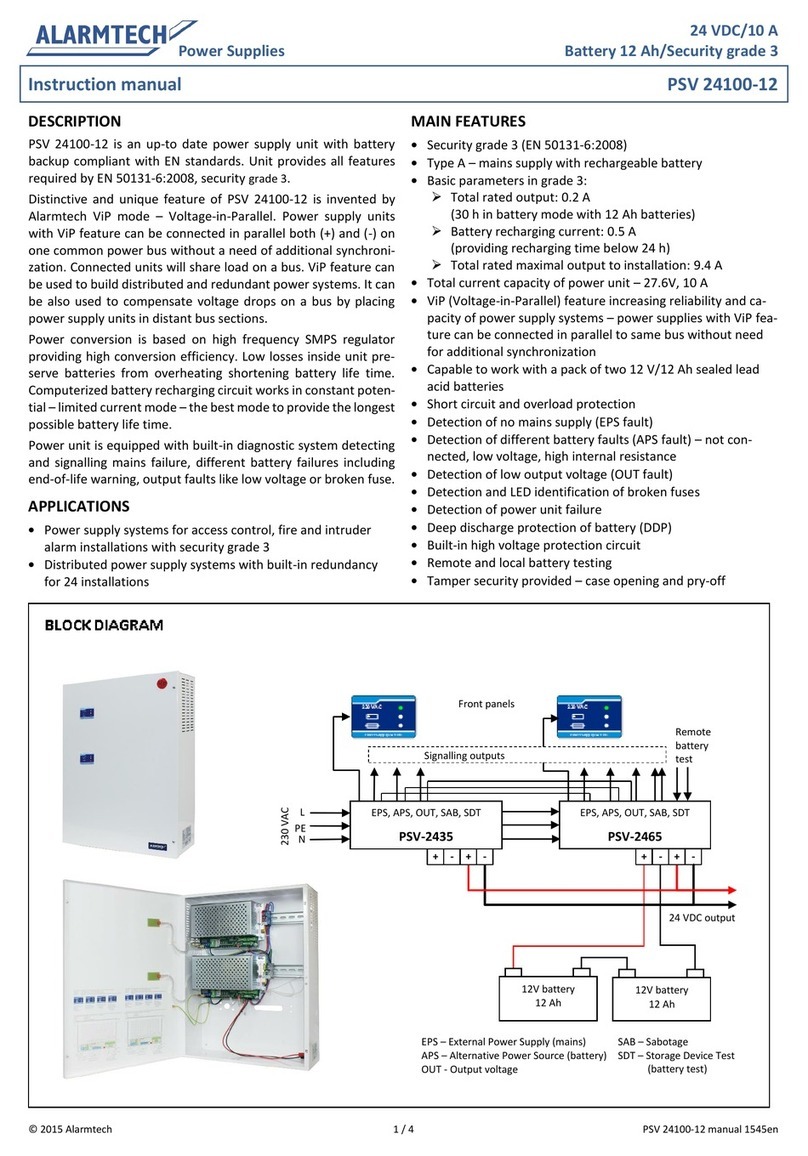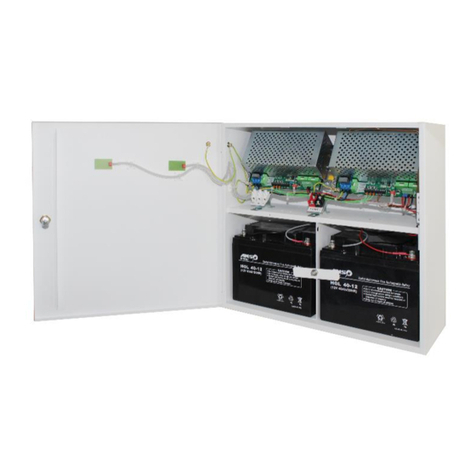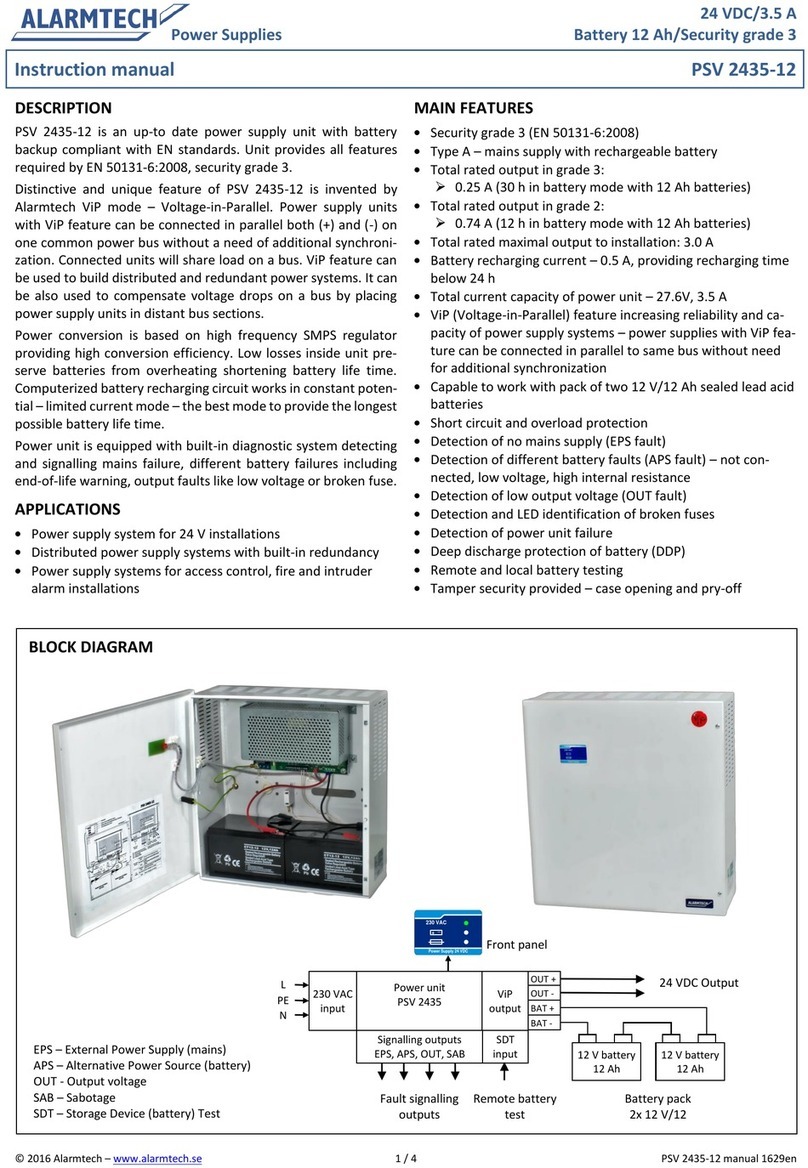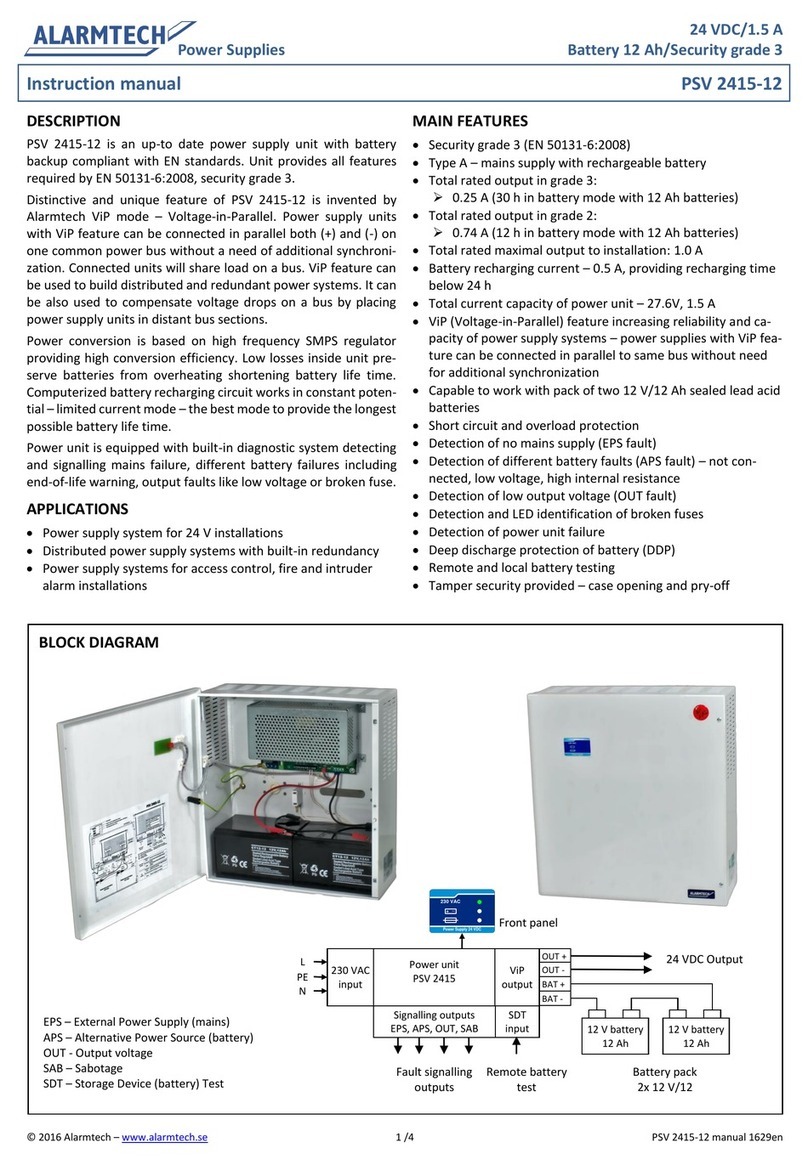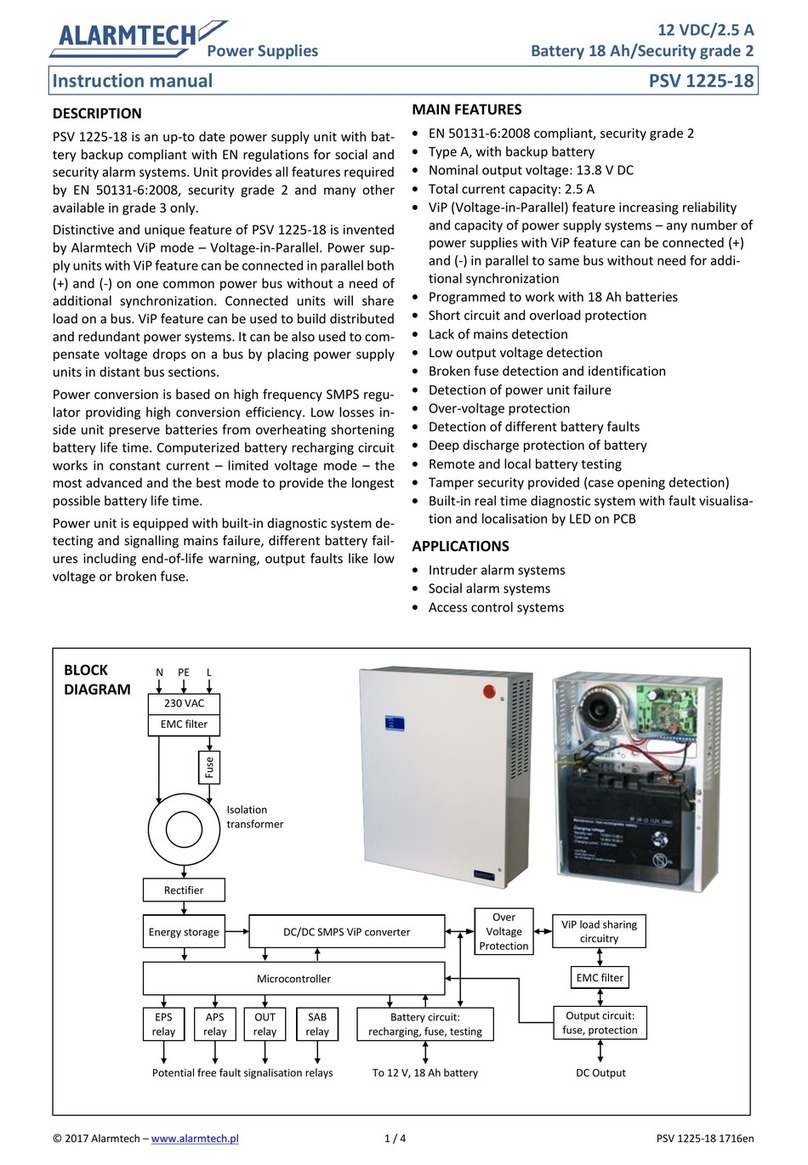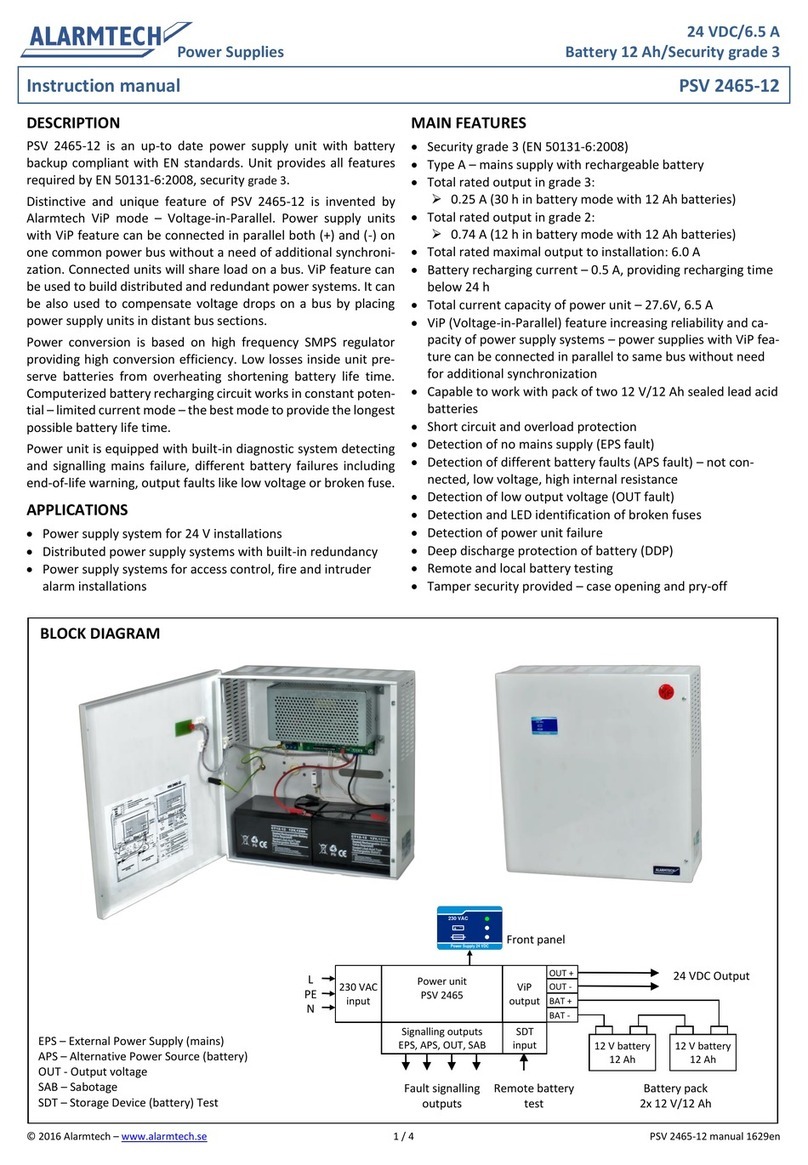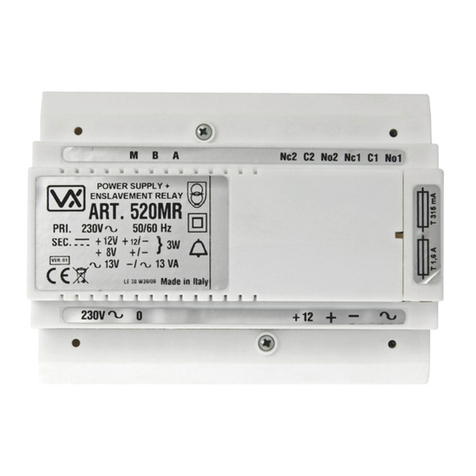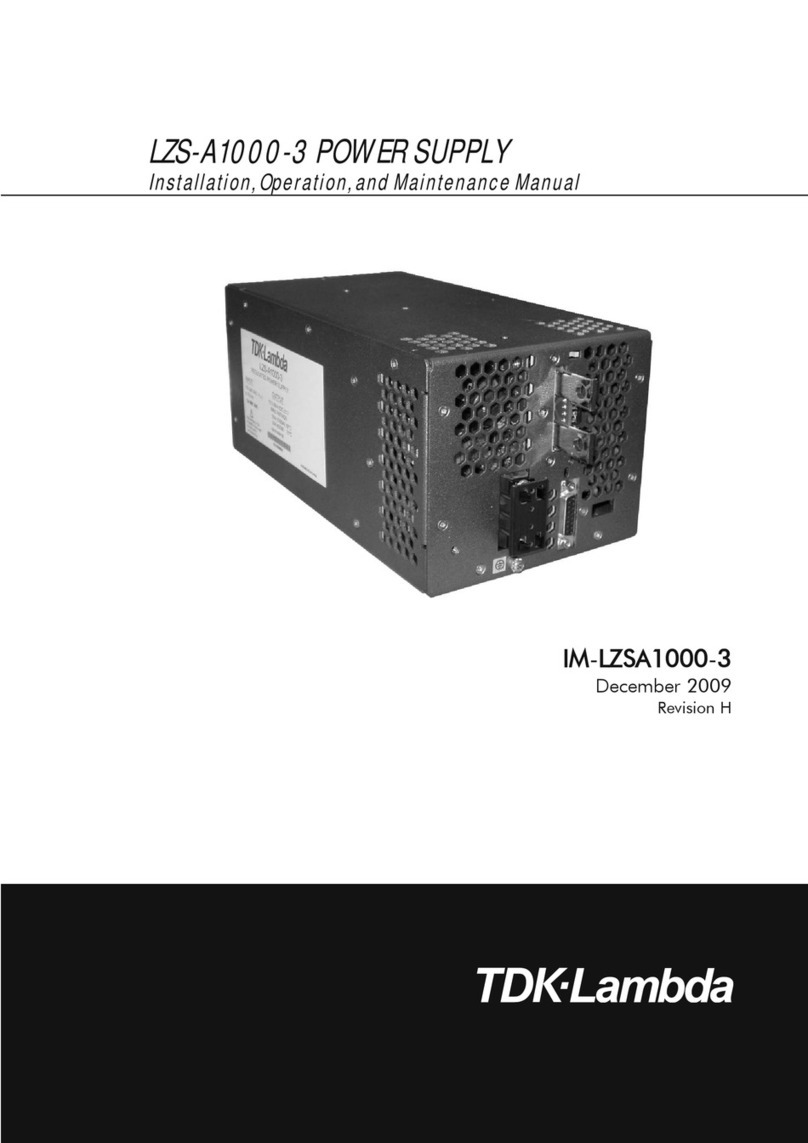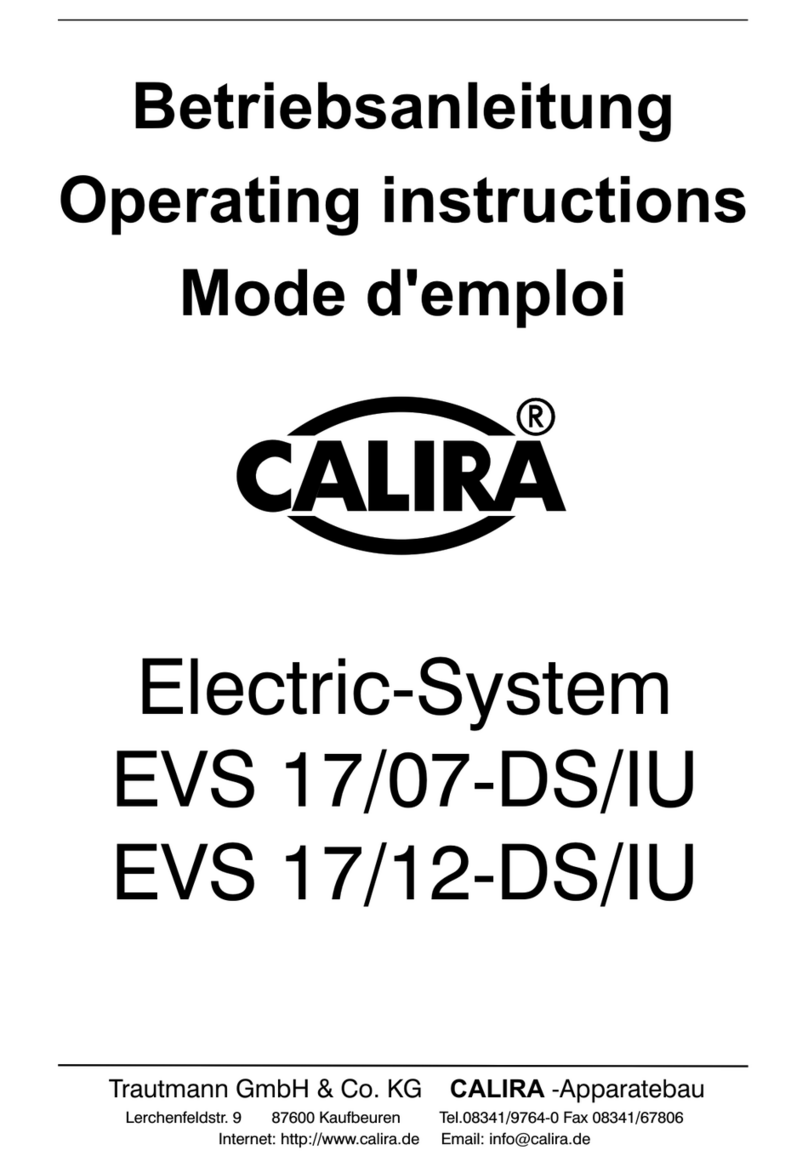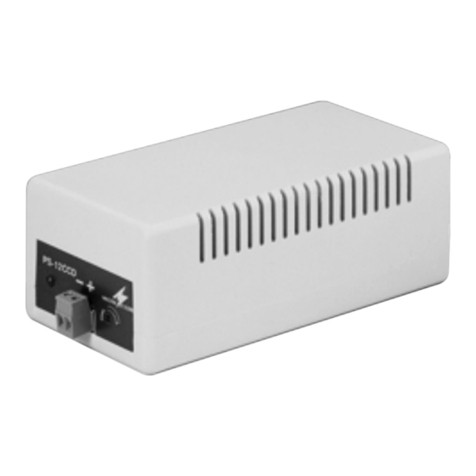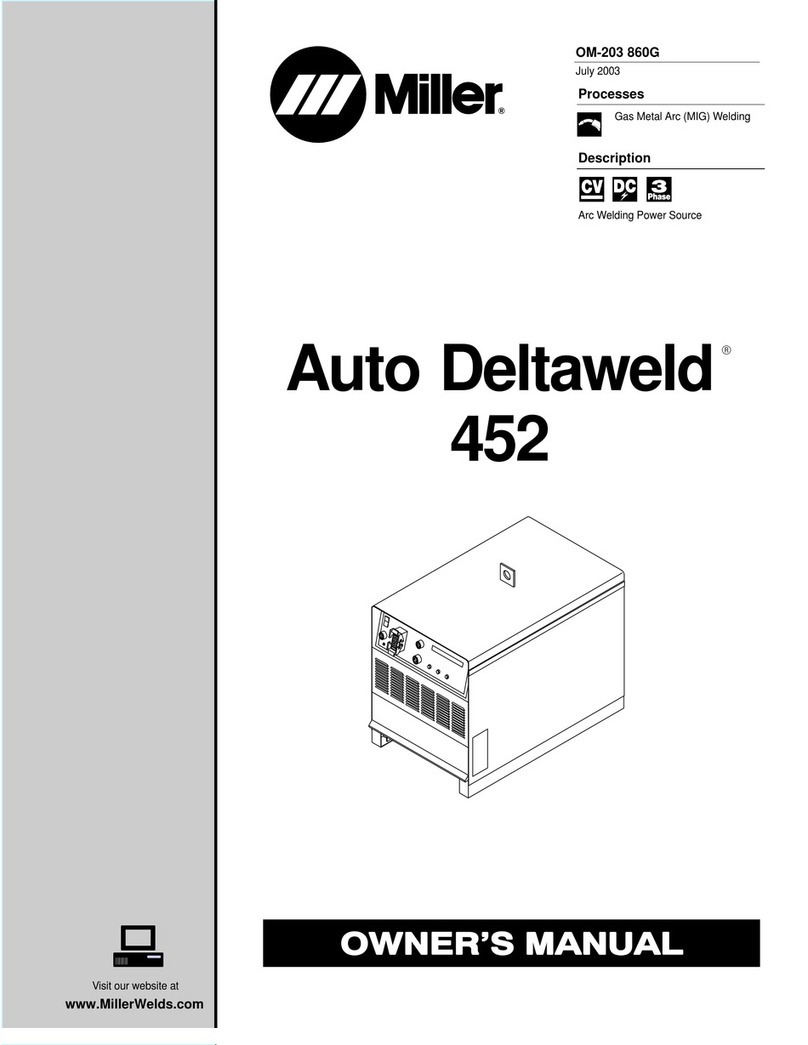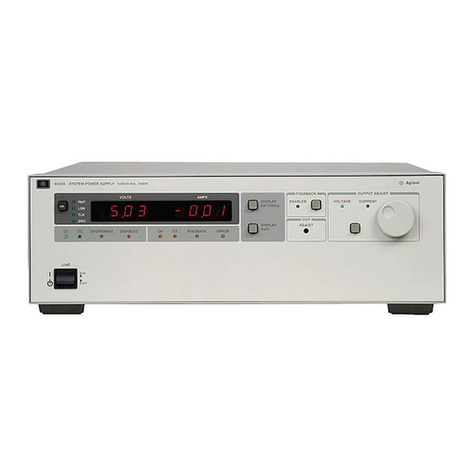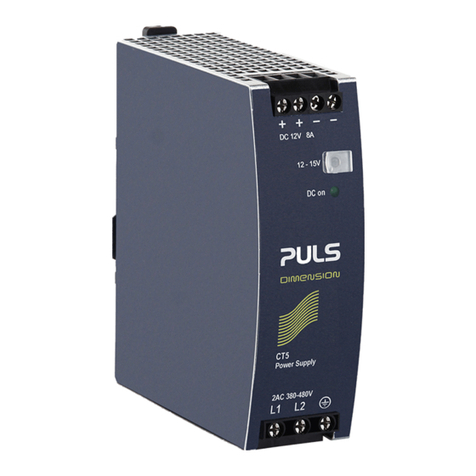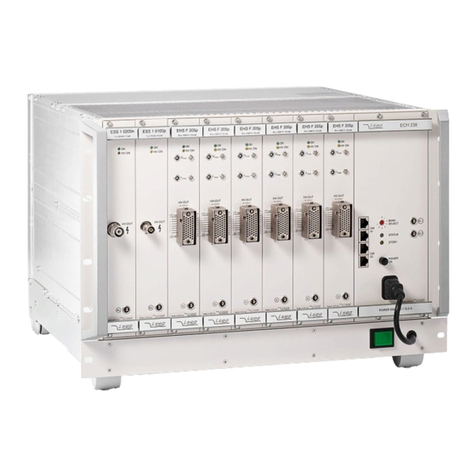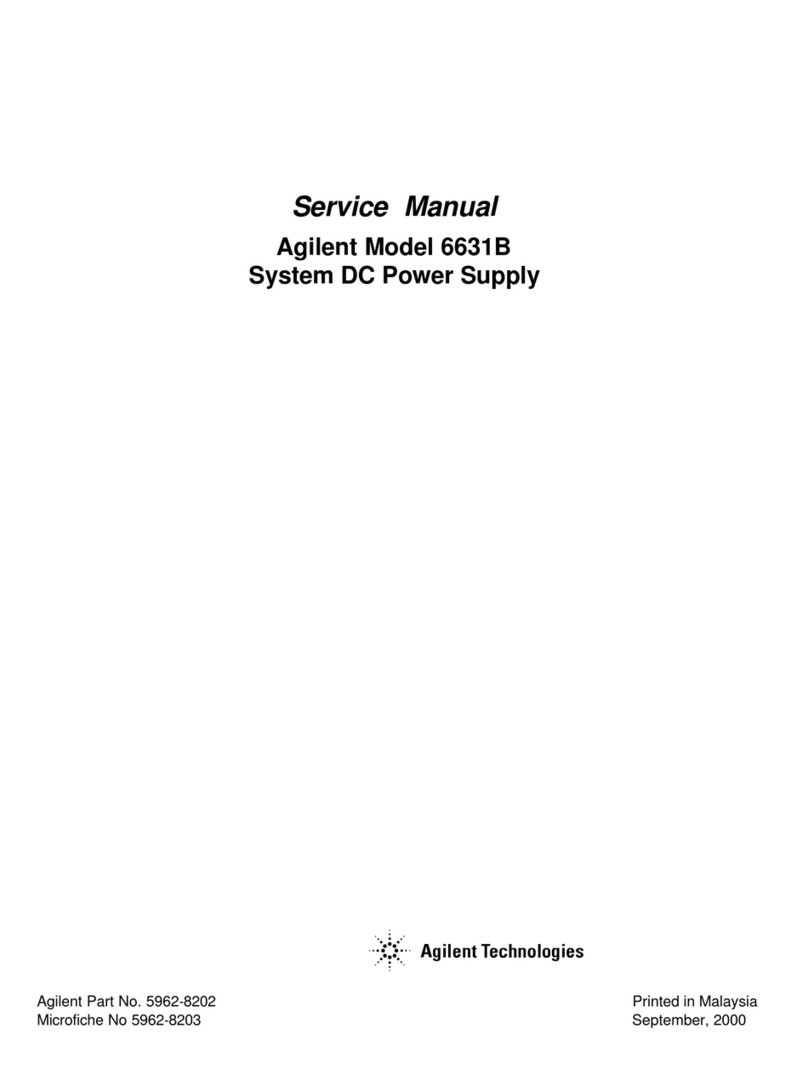© 2017 Alarmtech –www.alarmtech.pl 1 / 4 PSV 1215-18 1716en
12 VDC/1.5 A
Power Supplies Battery 18 Ah/Security grade 2
Instruction manual PSV 1215-18
DESCRIPTION
PSV 1215-18 is an up-to date power supply unit with bat-
tery backup compliant with EN regulations for social and
security alarm systems. Unit provides all features required
by EN 50131-6:2008, security grade 2 and many others
available in grade 3 only.
Distinctive and unique feature of PSV 1215-18 is invented
by Alarmtech ViP mode –Voltage-in-Parallel. Power sup-
ply units with ViP feature can be connected in parallel both
(+) and (-) on one common power bus without a need of
additional synchronization. Connected units will share
load on a bus. ViP feature can be used to build distributed
and redundant power systems. It can be also used to com-
pensate voltage drops on a bus by placing power supply
units in distant bus sections.
Power conversion is based on high frequency SMPS regu-
lator providing high conversion efficiency. Low losses in-
side unit preserve batteries from overheating shortening
battery life time. Computerized battery recharging circuit
works in constant current –limited voltage mode –the
most advanced and the best mode to provide the longest
possible battery life time.
Power unit is equipped with built-in diagnostic system de-
tecting and signalling mains failure, different battery fail-
ures including end-of-life warning, output faults like low
voltage or broken fuse.
MAIN FEATURES
•EN 50131-6:2008 compliant, security grade 2
•Type A, with backup battery
•Nominal output voltage: 13.8 V DC
•Total current capacity: 1.5 A
•ViP (Voltage-in-Parallel) feature increasing reliability
and capacity of power supply systems –any number of
power supplies with ViP feature can be connected (+)
and (-) in parallel to same bus without need for addi-
tional synchronization
•Programmed to work with 18 Ah batteries
•Short circuit and overload protection
•Lack of mains detection
•Low output voltage detection
•Broken fuse detection and identification
•Detection of power unit failure
•Over-voltage protection
•Detection of different battery faults
•Deep discharge protection of battery
•Remote and local battery testing
•Tamper security provided (case opening detection)
•Built-in real time diagnostic system with fault visualisa-
tion and localisation by LED on PCB
APPLICATIONS
•Intruder alarm systems
•Social alarm systems
•Access control systems
